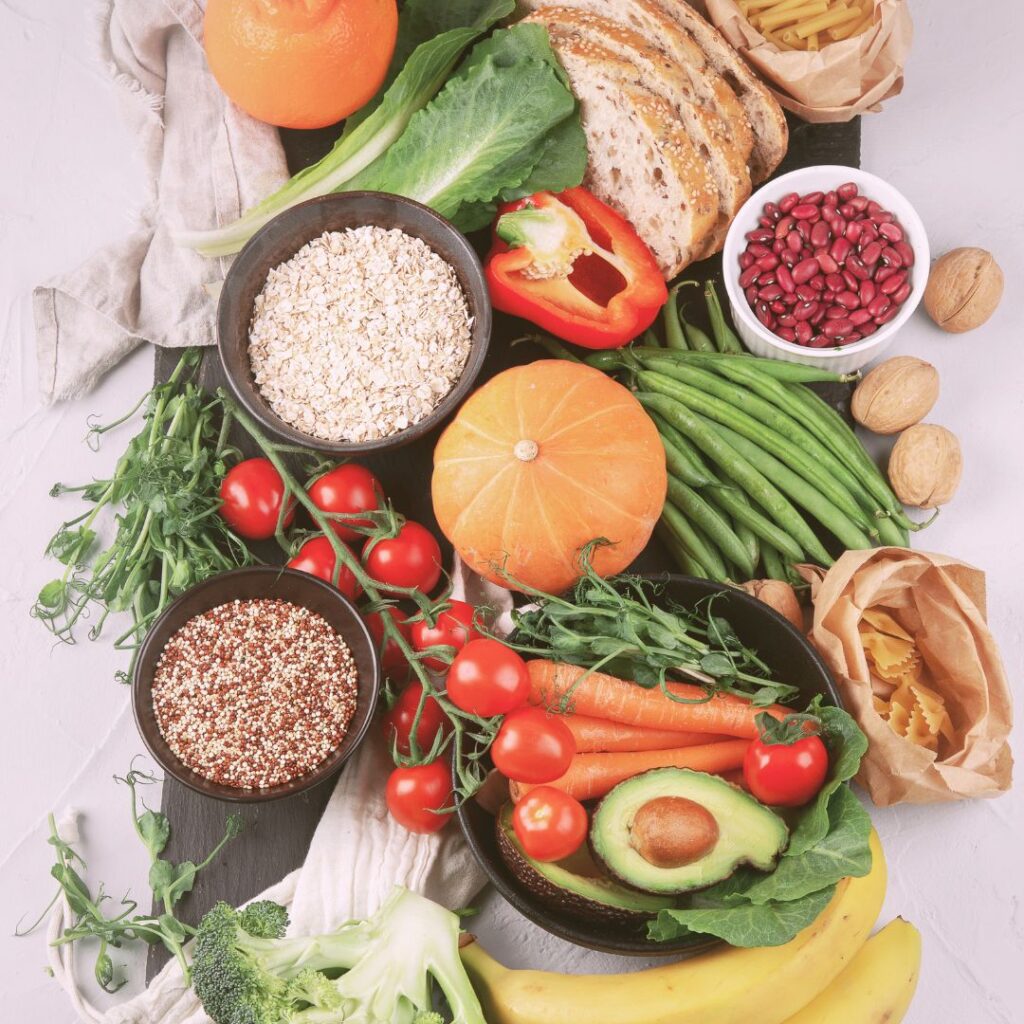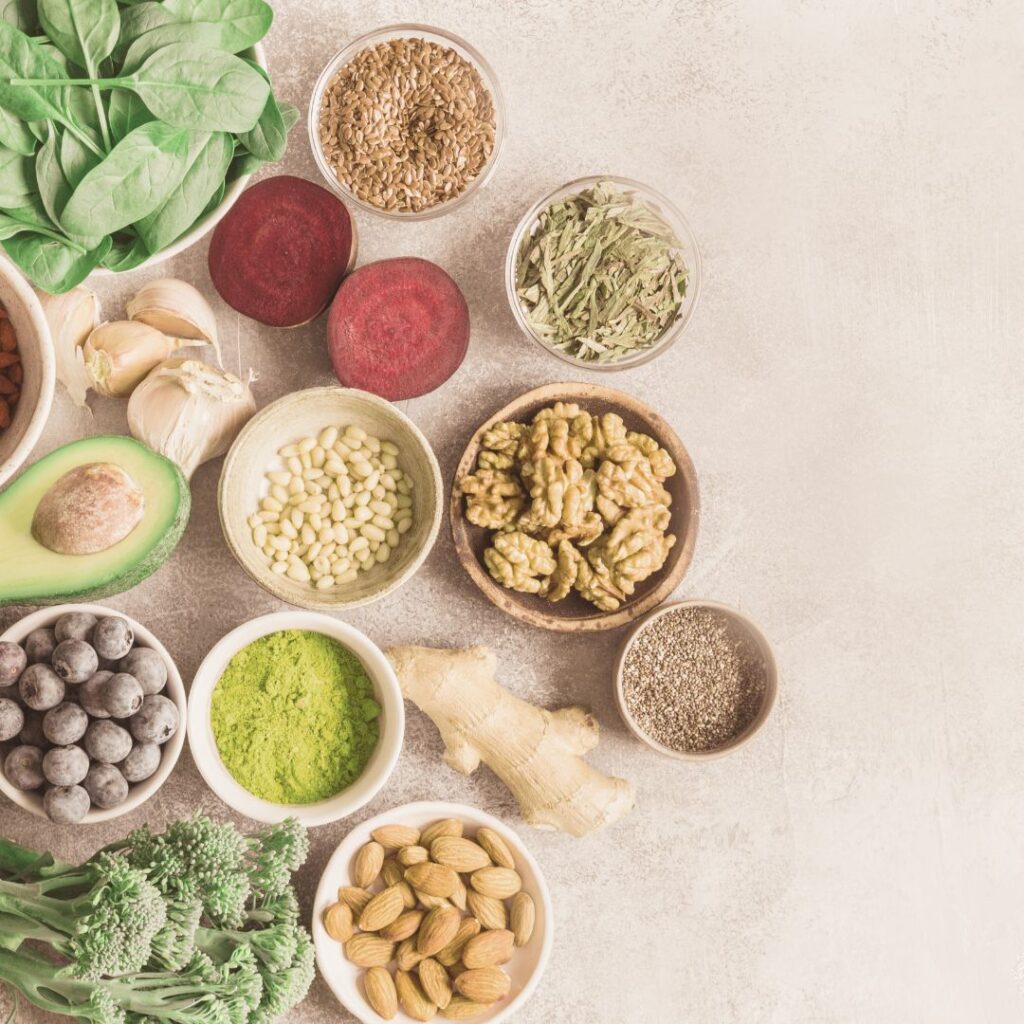It’s January and a lot of people have started off the year with a New Years resolution….to ‘get healthy’. With all the information available to us, the term ‘healthy’ can have many meanings. So what does a healthy diet look like? This weeks blog article is a quick read, answering that very question.
I don’t know about you, but over the years, I have had many different answers to what I believe a ‘healthy’ diet is. I want to discuss the answer simply and remind you that a healthy diet is not a ‘diet’ in the sense you may think. I’m not talking about ‘going on a diet’ to lose weight, etc. When I refer to the term ‘diet’ I mean the kind of foods that you eat in your day to day life.
There are four main components that make up the definition of a ‘healthy diet’. These components have been derived from teachings from Well College Global. The organisation explains why variety, wholesomeness, unprocessed foods and individualism are key to what constitutes as a healthy diet. So, let’s take a closer look.

Variety of food
The Australian dietary guidelines outline the importance of having variety in our diets. They have sectioned this variety into 5 different food groups, as you can see here. Eating a diet high in variety ensures your body receives a broad spectrum of nutrients. Different macro and micro nutrients play a different role in supporting your mind and body to function optimally. So, it makes sense that to include variety to increase the chances of reaping the benefits from different foods.
Having variety in your diet also helps with gut health. I have spoken about the importance of gut health in another blog, you can read that here. But basically, your gut microbiome thrives on a variety of different foods as they feed a diverse community of gut bacteria. This, in turn, contributes to a healthier digestive system, improved nutrient absorption, and a strengthened immune system.
Another reason why variety in your diet is important is the relationship you have with food in general. Eating the same foods repeatedly can lead to boredom and dissatisfaction. This can result in unhealthy eating habits and cravings for less nutritious options.
If you are wondering how to include more variety in your diet, you could try the following –
- Picking a different food from each food group to each throughout the week
- Eat the rainbow (Include foods in the 5 groups that have different colours)
- Eat seasonally (Click here for ideas)
- Try new recipes (Thai Fridays, Mexican Tuesdays, etc)

Wholesomeness (foods made from whole ingredients)
Wholesome eating starts with selecting foods that are rich in nutrients. Focus on nutrient-dense options such as fruits, vegetables, whole grains, lean proteins, and healthy fats. These foods provide a wide array of vitamins, minerals, and antioxidants.
Whole foods include fresh vegetables, fruit, whole grains, fish, eggs, nuts and beans. You can use the food swap technique to include more whole foods in your diet. For example, I LOVE crackers/crispbread types of food. So, instead of opting for a Salada biscuit, I now choose a wholegrain Vita Weat instead. This way I am still getting carbohydrates and get to eat crackers – but by swapping it, I’m enhancing the nutritional value.
Other ways to opt for more whole foods in your diet are –
- Home cooking and meal preparation
- Look for ‘wholegrains’ when choosing foods
- Add beans or legumes to meals as a swap for meat sometimes
- Read labels (click here for information on how to do this)

Unprocessed Foods
When I think ‘what does a healthy diet look like’ I automatically think of eating less processed foods. Unprocessed foods, in their natural state, are abundant sources of essential nutrients. The bioavailability of nutrients in unprocessed foods is often higher compared to processed foods. To learn more about Bioavailability of nutrients, click here.
Processed foods often contain additives, preservatives, and artificial ingredients that may have negative health implications. By opting for unprocessed foods, you can reduce your exposure to potentially harmful substances. Opting for unprocessed foods also allows for better control over sodium and sugar intake. Many processed foods have excessive amounts of salt and added sugars. This can contribute to hypertension, obesity, and other health issues.
Ways you can include more unprocessed foods in your diet are –
- Take small steps, like the A-Z food swap idea
- Before you purchase a meal in a box – think to yourself if you could make a similar meal with fresh ingredients
- If you do go for box foods, include ones that are full of vegetables or fruit
- Cut back on red meat and opt for fish

Individualism (how your body processes foods)
This one is something a lot of us forget! When you are thinking ‘what does a healthy diet look like’ I want you to consider your own body and its needs. The way my body processes food and nutrients is different to others, so eating the same meal doesn’t necessarily mean I will have the same benefits as the other person.
Factors such as genetic and microbiome diversity, metabolic rate, digestive enzyme production, food intolerance, hormonal influences and environmental/lifestyle factors. Basically, you could eat the exact same meal as your partner but your body may absorb the nutrients from the food in a different way.
If your gut microbiome is healthy and thriving, you body is more likely to receive optimal nutrients from food. If your gut microbiome is in a state of dysbiosis, then you may not receive adequate nutrients from your food. I wrote an article about gut health – if you want to learn more, click here.
Hormones play a huge role as well. Hormonal variations, influenced by factors such as age, sex, and stress levels, impact nutrient partitioning and storage. Understanding your own hormonal landscape could allow you more precise dietary interventions, tailored to your unique needs.
Getting to know your body takes time, but one way you can start to understand how your body responds to food is by completing a food diary.

In summary, a healthy diet has about including a wide variety of unprocessed, whole foods that are the best for YOUR body. Be careful when following fad diets that you see on the internet, what works for one person may not work for you.
I hope this article has answered your question – ‘what does a healthy diet look like’. If you are interested in learning more about yourself, how your body responds to food or how to improve your overall health, I’d love to hear from you. I provide online health coaching that can help guide you to improve your overall wellness in simple steps.
If you want to discuss this further, please send me an email at rebecca@theorchardrose.com or even book in an online session here.


